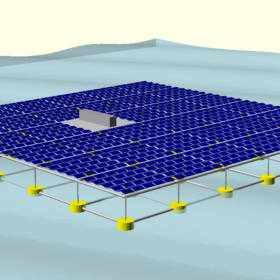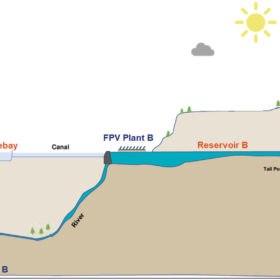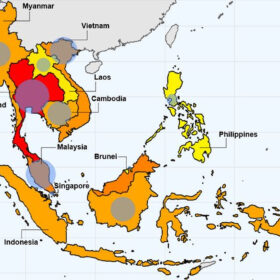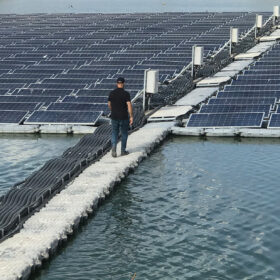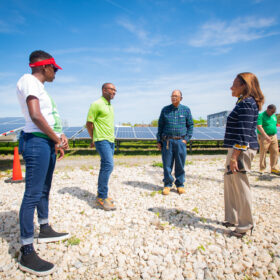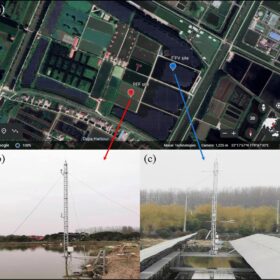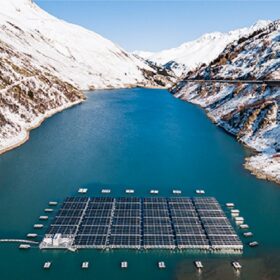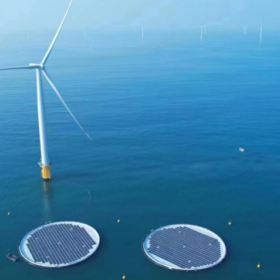Assessing complementarity of offshore hybrid wind-solar projects in Belgian North Sea
A group of researchers from Belgium performed a complementarity analysis for offshore wind power combined with floating photovoltaics. The team found that complementarity is strong on weekly and monthly timescales, and that it can increase under certain climate change scenarios. Assuming a full permanent transmission loading capability, the researchers calculated that a 3 GW floating solar plant added to the existing wind power in the Belgian North Sea would increase the renewable electricity yield by 47% while occupying only a limited surface area.
Hybrid hydro-PV systems increase producer profits by up to 18-21% in sub-Saharan Africa
A team of researchers from Norway analyzed a case study of a cascade hydropower system hybridized with both floating and ground mounted PV under sub-Saharan African market conditions. It found that hybrid systems can reduce seasonal variability in renewable energy generation and increase annual producer profits under both PPA and spot market schemes.
Southeast Asia has technical potential to deploy over 1 TW of floating PV
A group of researchers from the US National Renewable Energy Laboratory assessed the potential for floating PV (FPV) plants at reservoirs and natural waterbodies in 10 Southeast Asian countries. It found that the overall FPV technical potential for the region ranges from 477 GW to 1,046 GW.
Floating PV plant operators may achieve additional revenue through non-evaporated water
A group of researchers from Italy investigated the economic competitiveness of various ground mounted and floating PV systems with regard to cost and performance, taking into consideration revenues due to reduced water evaporations. They found that the use of non-evaporated water at photovoltaic system sites can achieve revenues greater than $3/kW if used for irrigation and higher than $4/kW if sold to generate hydroelectricity.
Novel fins increase floating PV productivity, reduce LCOE by over 17%
A group of researchers in Egypt studied the use of partially submerged angle perforating fins (PSAPF) and solid fins (PSASF) to assess their ability to remove excess heat from floating photovoltaics under Mediterranean outdoor environments. The team found that the optimized PSAPF-FPV module achieved an LCOE of $0.068/kWh).
Breaking through ‘status quo bias’ with co-designed solar power plants
A group of Dutch researchers assessed the impact of including stakeholder input in the design process of solar power plants. It found that a co-designed approach may help counter the resistance of local inhabitants and result in more positive evaluations of the project.
Effects of floating photovoltaics on radiation, energy flux on lakes
A group of researchers from China assessed the impact of floating PV systems on the radiation, energy flux, and driving forces on lakes under varying meteorological conditions. It found that the impact of a PV array on the sensible heat flux of a lake is 1.5 times that of a natural lake.
Comprehensive review of all water-related PV technologies stresses need for careful planning
A new study of existing research on water-based PV (WPV) technologies points to gaps in published reports on the technologies, particularly regarding environmental impacts, in general, and cost analyses for canal top solar, specifically.
Stepping into the European utility-scale market: an interview with Gregory Lukens, Director Utility Europe for Solis
At this year’s Intersolar Europe conference in Munich, pv magazine caught up with Gregory Lukens, the new Director Utility Europe for Solis, a brand of Ginlong Technologies. He discussed his background in solar, and how the company is looking to build its footprint in the European utility scale segment.
Offshore floating vs. land-based PV systems
A group of researchers from Utrecht University analyzed offshore floating photovoltaic (OFPV) systems to determine reasons for enhanced performance compared with land-based systems. Out of their research, the team developed two regression models to help predict yield advantages when siting projects.

